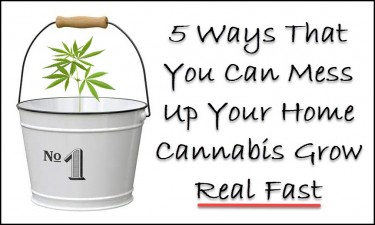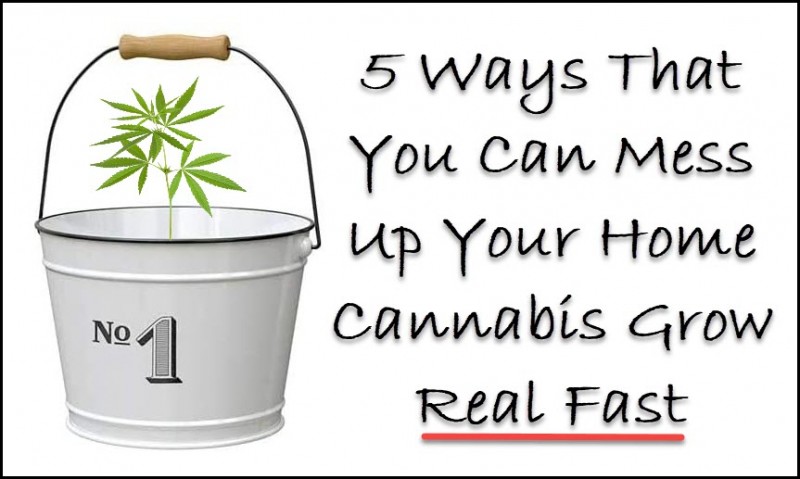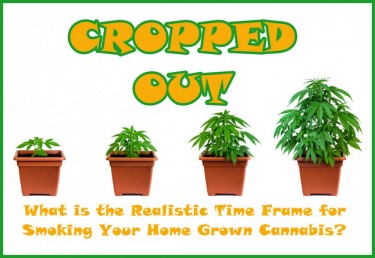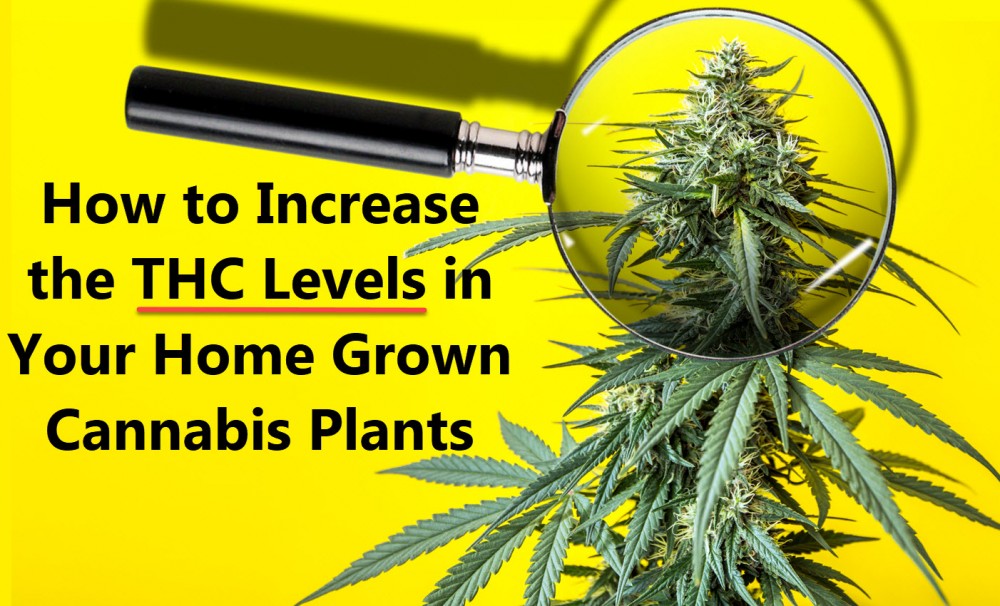5 Ways to Mess Up Your Home Cannabis Grow

Medical card holders are legally permitted to grow cannabis at home. If the state where you live has made that law for registered patients in the medical marijuana program, you may want to try growing yourself. Before you start, make sure you understand the state laws and restrictions about how many mature plants and seedlings you can cultivate at home.
There are many reasons why patients with medical cards grow their own cannabis for medicinal use. First, it is convenient. You don’t have to drive to a dispensary and wait in line. Second, once you get set up with one or two space buckets or a grow tent at home, you really can start saving money growing your cannabis.
If it is your first time, the best place to start is a list of “what not to do” when it comes to growing cannabis at home. Here are five common mistakes that people make when they are learning to home-grow for the first time.
1. Choosing a Difficult Strain to Grow from Seed
When you purchase your cannabis at a dispensary, you will likely get a few seeds in your container or bag. It is tempting to try to germinate the seeds. After all, if you purchased it from a dispensary, you are clearly a fan of the strain. But if you are a first-time grower, be prepared to be disappointed.
Some people are successful at germinating ‘bonus’ bag seeds. But you can’t tell whether a seed is mature or undeveloped. You may be planting and spending a lot of time on something that will (literally) never see the light of day.
Different strains of cannabis are notoriously difficult to cultivate. For instance, while OG strains are popular, they are a high-maintenance grow. They require frequent feeding (fertilization) and like a lot of magnesium and calcium to propagate. Overfeeding, or ‘nutrient burn,’ results in plant stress, like yellowing, browning, and death of the cannabis leaves.
For fussy cannabis strains, you have to use a TDS meter that measures the exact amount of nutrients in your solution (PPM). If you are one of those people who loves a challenge and the science of cultivation, you may enjoy the extra work. But for most people, it’s a little much to manage when you are just starting out.
Choose seeds or seedling plants from a strain that is known to bloom quickly. Clones for Blue Dream, for instance, are easy to find. Blue Dream is a high yield strain that is also resistant to root rot and mildew. Easy-to-grow strains are often called ‘autoflowers’ because they are low maintenance and have a high success rate, even for novice growers. Some other strains in this category include Royal Gorilla Automatic, Green Gelato Automatic, White Widow Automatic, and Fat Banana Automatic. Basically, if the strain name reads ‘Automatic,’ you can be guaranteed an easy grow.
2. Not Using the Right Container Size for Each Phase of Growth
Many people prefer growing Indica strains because they are more tolerant of indoor cultivation compared to Sativa strains. The flowering time for Indica strains is approximately 6-8 weeks, which ultimately means less waiting and less work. But if you don’t use the right size of planting containers, even the easiest grow strains will give you a problem.
One of the most common mistakes that people make growing cannabis at home is the pot size. You love your plant(s), and you may feel like a larger pot will make for a happier and healthier plant. But as evolved as cannabis is as a plant, it has specific requirements to develop a strong root system.
A general guide for cannabis planter sizes will help you choose the right container and level up as your plant grows indoors.
0-3 weeks (seedling cube)
2-6 weeks (4-5” container)
6-8 weeks (3-5-gallon pail or container)
Depending on how many plants you are legally permitted to grow as a medical cardholder, you can cycle your seedlings up with more than one container. That will sustain a standard yield for your medicinal needs.
3. Not Checking the pH Level and Recycling Your Soil
Waste not want not, right? Except when it comes to loam and potting soil for cannabis plants, you don’t want to keep reusing the same soil. Cannabis is more discerning as a plant than vegetables or flowers. Use the same soil, and you are basically providing it with depleted nutrients.
You probably think that you can just add some of the nutrients to recharge the soil? That works for other types of plants and can work depending on the strain. Autoflower cannabis strains may tolerate recycled soil, but the results and yield may be affected.
Always check your soil’s pH level and start a new seedling or germinated seeds in fresh soil for the best results. There are many ways to check and monitor the pH of your soil. Economical pH strips can be used.
These are paper strips that are placed into the soil and record the acidity of the soil on a colored scale. Some meters can be used to check pH or monitors that remain in the soil. Advanced monitors can also send real-time reports of soil acidity to your smartphone.
4. Heat Stressing Your Plants
You may like sitting up close and personal to some UV lights in a tanning bed, but your cannabis plants do not. One of the first telltale signs of heat stress is when the leaves’ tips on your cannabis plant begin to curl upward. As the heat damage progresses, your plant will start to look dry and withered. Some strains can recover from heat stress; however, many do not.
If you are growing your cannabis indoors, the solution may be an easy one. The light source may be too close to the top of the plant. In the vegetative phase (before the plant flowers), you can adjust the light source to stop heat damage. However, in the flowering stage, you may see your plant(s) develop a foxtail. That is when new buds begin to emerge from existing ones.
Heat stress can also cause excessive seeding. When a cannabis plant is exposed to hot conditions and lack of moisture, it moves into survival mode. It tries to produce more buds to propagate the next generation of plants.
What is really interesting is that cannabis plants can retain that memory of being heat stressed. It is a complex plant! If a foundation plant has created foxtails, clones from that plant may carry a genetic imprint of excessive seeding. Now you know how seeded weed happens. And also, why professional growers do not continue to ‘breed’ plants that have been heat stressed.
5. Poor Ventilation
Indoor containers must have good airflow. Whether you are growing in a space bucket, a tent, or a greenhouse, there must be oxygen intake and exhaust. At each location, there must be a fan to keep the airflow moving constantly.
Ventilation helps prevent too much moisture from building up in your cannabis containers. Not enough moisture and your plants will experience heat stress. Too much moisture and cannabis plants become susceptible to root rot and mildew. Sick plants do not produce quality flowers, and they may not flower at all, depending on the extent of mold and mildew in the soil.
Cultivating cannabis at home can be challenging. But with some practice and attention to the specific growing needs of the strain, you can produce your own medical cannabis indoors. Reddit has several forums for novice growers with great advice from experienced cultivators.
It is a lot of work to home-grow cannabis. But once you have set-up your equipment and understand the growth methods, you will be successful. Remember to check with your state marijuana laws regarding how many ounces of home-grown cannabis you are permitted to possess. Know your limit (and stay within it) to avoid problems and happy growing!
HOME GROWS AND WHAT TO KNOW, READ MORE...
HOW LONG DOES IT REALLY TAKE TO GROW WEED AT HOME?








